I've been bouncing a few ideas for games around in my head, and I wanted to draw a character from one of them. This guy's a mech driving mercenary in search of the men who betrayed him. I wanted to try doing a drawing using Ctrl+Z as little as possible. Turned out to be a really fun challenge, as it forced me to loosen up a lot more.
Tuesday, February 18, 2014
Mech Pilot
I've been bouncing a few ideas for games around in my head, and I wanted to draw a character from one of them. This guy's a mech driving mercenary in search of the men who betrayed him. I wanted to try doing a drawing using Ctrl+Z as little as possible. Turned out to be a really fun challenge, as it forced me to loosen up a lot more.
Monday, February 17, 2014
Fluid Simulators and the Future of VFX
With the reveal of the new generation of game consoles, we've been getting treated to all sorts of incredible new graphics technology. Higher resolution textures, powerful lighting systems, intricate shaders, etc etc. Of course what I was looking out for was improved FX technology and what the new systems would be capable of. I'm sure many of you saw that extravagant looking explosion during the reveal of Battlefield 4:
It's an impressive effect for sure. When I first saw it, my first inclination was that it was bullshot footage, prerendered to wow the audience. But as soon as other footage cropped up I understood exactly how they did it.
The entire explosion is one big 2D facade. A flat plane with an animation rendered out from a fluid simulation program. It's more or less a high res version of the explosion sprites from Duke Nukem.
Now I typically wouldn't have too much of a problem with this. Several other games have used similar techniques to achieve impressive visuals for cheap.
However, my issue with BF4's usage of the technique is the fact that if you get too close to it, you start to see the man behind the curtain. If it were something off in the background, or something that you could only ever look at from one perspective, then it'd work great. But like I showed in that video above, if you walk right up to it the effect is completely ruined. They are attempting to use prerendered simulations in places where traditional particle systems should normally be used.
With the rise of fluid simulators, and the ability to render out spectacular looking effects, it feels like people are trying to use these animations to do all the work for them.
For those who don't know, a fluid simulator is a program like FumeFX, Maya Fluids, or PhoenixFD, that is able to create a 3D simulation of fluid dynamics, meaning that you can use them to create fairly accurate simulations of fire, smoke, and water. You typically see 3D simulated effects in movies, where doing the effect practically would be too expensive.
So the question is, now that we have fluid sim technology, why should you bother creating a complex particle system when you can render out a 2D animation of something and have that be the entire effect?
Because relying on a fluid sim means that you're taking away a lot of your own style from your effects. When you have to come up with your own way to animated fire, smoke, dust, debris, you inject a lot of your own personal vision into how it looks. But if you let the computer simulate it all for you, it winds up feeling soulless and homogenized.
My other issue with fluid sims is that they tend to feel the same, and they never look quite right.
Fluid sim FX have a certain look to them. A look that we've come to learn through their usage in movies. When we see CGI in movies, it typically sticks out like a sore thumb, so our brain associates the look of it with 'fakeness'. This carries over to when we see that same look in videogames. Even though the rest of the game environment is fake as well, seeing the familiar look of fluid simmed effects triggers the same fakeness vibe we get when seeing them in movies.
So I know I've been harping on fluid simulators this entire post, so I must think they're awful things that shouldn't ever be used.
Well not exactly. Fluid simulators CAN be very useful tools, if used in moderation. If you can mix together fluid simmed textures along with more traditiona techniques, you can give your effects much more naturalistic motion.
My only concern for the future is if we ever make fluid simulations that run in real time. If that becomes mainstream it may mean the phasing out of traditional sprite-based particle effects. What makes VFX so varied and unique in games is the limitations imposed on the FX artists. If we remove those limitations and replace it with systems that create the art for you, we could lose a lot of what makes VFX so great.
It's an impressive effect for sure. When I first saw it, my first inclination was that it was bullshot footage, prerendered to wow the audience. But as soon as other footage cropped up I understood exactly how they did it.
The entire explosion is one big 2D facade. A flat plane with an animation rendered out from a fluid simulation program. It's more or less a high res version of the explosion sprites from Duke Nukem.
Now I typically wouldn't have too much of a problem with this. Several other games have used similar techniques to achieve impressive visuals for cheap.
However, my issue with BF4's usage of the technique is the fact that if you get too close to it, you start to see the man behind the curtain. If it were something off in the background, or something that you could only ever look at from one perspective, then it'd work great. But like I showed in that video above, if you walk right up to it the effect is completely ruined. They are attempting to use prerendered simulations in places where traditional particle systems should normally be used.
With the rise of fluid simulators, and the ability to render out spectacular looking effects, it feels like people are trying to use these animations to do all the work for them.
For those who don't know, a fluid simulator is a program like FumeFX, Maya Fluids, or PhoenixFD, that is able to create a 3D simulation of fluid dynamics, meaning that you can use them to create fairly accurate simulations of fire, smoke, and water. You typically see 3D simulated effects in movies, where doing the effect practically would be too expensive.
Plenty of fluid sim action in this reel.
So the question is, now that we have fluid sim technology, why should you bother creating a complex particle system when you can render out a 2D animation of something and have that be the entire effect?
Because relying on a fluid sim means that you're taking away a lot of your own style from your effects. When you have to come up with your own way to animated fire, smoke, dust, debris, you inject a lot of your own personal vision into how it looks. But if you let the computer simulate it all for you, it winds up feeling soulless and homogenized.
Compare the fire graphics of Far Cry 2 and Far Cry 3. FC3 used fluid simmed textures for the majority of it's effects. Personally I preferred FC2's fire, as it feels like the the action is more in the way the particles were actually moving, rather than just relying on the animation of the texture.
My other issue with fluid sims is that they tend to feel the same, and they never look quite right.
Two different reels by two different people, but since they both used the same fluid sim, it all winds up looking samey.
Fluid sim FX have a certain look to them. A look that we've come to learn through their usage in movies. When we see CGI in movies, it typically sticks out like a sore thumb, so our brain associates the look of it with 'fakeness'. This carries over to when we see that same look in videogames. Even though the rest of the game environment is fake as well, seeing the familiar look of fluid simmed effects triggers the same fakeness vibe we get when seeing them in movies.
So I know I've been harping on fluid simulators this entire post, so I must think they're awful things that shouldn't ever be used.
Well not exactly. Fluid simulators CAN be very useful tools, if used in moderation. If you can mix together fluid simmed textures along with more traditiona techniques, you can give your effects much more naturalistic motion.
My only concern for the future is if we ever make fluid simulations that run in real time. If that becomes mainstream it may mean the phasing out of traditional sprite-based particle effects. What makes VFX so varied and unique in games is the limitations imposed on the FX artists. If we remove those limitations and replace it with systems that create the art for you, we could lose a lot of what makes VFX so great.
Saturday, February 15, 2014
VFX Tips - The 3 Rules of VFX
VFX is all about trickery. Fooling people into thinking that a bunch of 2D flat images are a 3D volumetric effect. Replicating accurate fluid physics with 2D sprites is very difficult, so more often than not you'll be making an abstracted representation of an explosion, rather than something that looks accurate to the real world. This freedom from trying to make it look real is both the best and worst thing about VFX, because it means that you are in complete control of how you want your effects to look, but it also means you're working from the ground up, and you have to try and come up with your own way of representing fire and smoke that's within the limitations of your game engine.
While there is no one way to do anything in FX, I've come up with the 3 most important aspects of what defines how an effect looks and feels.
-Volume
-Texture
-Motion
If you have a solid grasp on all three of these concepts, then you'll be able to make spectacular looking FX.
Volume:
As I said, unless your engine supports fully 3D fluid simulation, all you have to work with are 2D planes to create your FX. So you need to trick people into thinking that the effect is still volumetric. There have been some technical advancements to help you achieve that.
Since particles are 2D planes, when they intersect with objects they would create a very obvious line, ruining the effect. It's possible to hide the line by creating many more particles, but that's inefficient and not at all an ideal solution, hence why Soft Particles were created.
Soft particles work by blurring that harsh edge where the particle intersects with an object, making it look more like a volumetric cloud than a flat image. The effect still has it's limitations though. Trying to soften the edge of a very large particle may reveal the edge.
Another technical advancement is Particle Illumination, or particle shadows. This effect applies a gradient of shadow across the particle plane, making it look as though it is being illuminated by the local light source.
Shadows and lighting can really give your effect a sense of depth. As you can see in the Battlefield 3 image at the top of this post, the light of the explosions shining through the smoke makes it feel real and tangible.
But to achieve volume requires more than just technical tricks. Volume is all about balancing your particle count to achieve the greatest sense of depth while retaining the design and look that you want to achieve. Using a ton of particles gives a lot of volume, but it can become cluttered and you'll lose control over what the particles are doing.
Using fewer particles that have a more specifically designed texture is the best way of achieving volume.
Texture:
Now when I say Texture, I'm not referring to the actual textures you are using in your particle (though those ARE an aspect of the particle's overall texture) I'm talking about the level of visual noise and fine detail in the effect.
Texture manifests itself from the quality of the materials you're using, as well as how intricate of detail you get into when creating the effect. Highly textured effects tend to look more crisp and intricate, while low detail effects feel more generalized and vague. High detail is about giving you a visual show, and low detail is more about giving the feeling of the effect.
Having intricate high quality particle materials will give you more visual texture, but it will also make the material more situational. You wouldn't be able to use it for as much as a vaguer more generalized material. A more simplistic texture could be used for all kinds of things. Games like Grand Theft Auto 4 use the same texture for the bursts of flame from an explosion as the smoke that follows, all they have to do is simply color it bright orange.
A game like Company of Heroes, on the other hand, has highly specialized particle textures. They have multiple different types of bursts of sparks, jets of smoke, thick debris, thin debris, etc etc etc. It's more work, but it allows them to really sculpt out the look of the effect.
Like volume, it's also possible to have too much texture. Throwing too many sharp elements into an effect can make it look messy and unpleasant.
Motion:
Motion is all about how the different elements of your effect move. Motion is the biggest contributing factor to how an effect 'feels'. You can make things feel impactful, flowing, crunchy, pillowy, etc. Feel is a very vague concept, but there is no question that it exists, and trying to get control over how you want something to feel is the biggest challenge in VFX.
Offsetting elements by a fraction of a second can be the difference between a weak effect and a powerful one. Notice in the image above how the first element of the effect is a large vertical flame, then the shockwave, and only after all that does the dust cloud kick up. It doesn't happen all at once. This progression of elements in the effect makes it really feel like the explosion is ripping the ground up from the earth.
You also want to have a variety of motions within the effect. You may want it to start with a punch, the move to something more flowy. Mix billowing smoke with scuttling sparks. Have some effects plume outward while others flash and retract. Giving your effect a range of motion will make it feel more like a combination of the different elements that created it.
Bad motion is instantly recognized. It will make your effect feel bland, awkward, or unfitting. Spawning everything at the same time can make it feel abrupt. Not giving the effects a unified motion will make it feel like an obvious simulation. People won't become interested with the action onscreen if your motion is boring.
Volume, Texture, and Motion are what set spectacular effects above bland ones. If you can master these concepts, learn to balance them based on your personal preference and keep them within the limitations of your engine, you'll be able to create amazing looking particle effects.
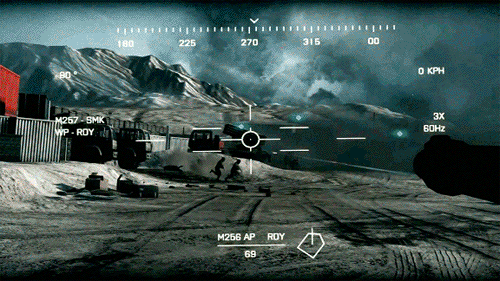 |
| Does it look real? Not particularly. Does it look cool? Hell yea! |
-Volume
-Texture
-Motion
If you have a solid grasp on all three of these concepts, then you'll be able to make spectacular looking FX.
Volume:
As I said, unless your engine supports fully 3D fluid simulation, all you have to work with are 2D planes to create your FX. So you need to trick people into thinking that the effect is still volumetric. There have been some technical advancements to help you achieve that.
Since particles are 2D planes, when they intersect with objects they would create a very obvious line, ruining the effect. It's possible to hide the line by creating many more particles, but that's inefficient and not at all an ideal solution, hence why Soft Particles were created.
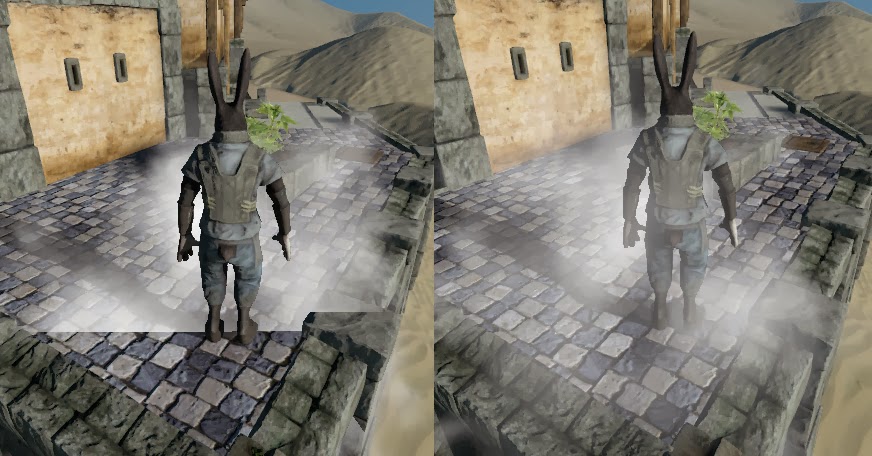 |
| With and without soft particles. |
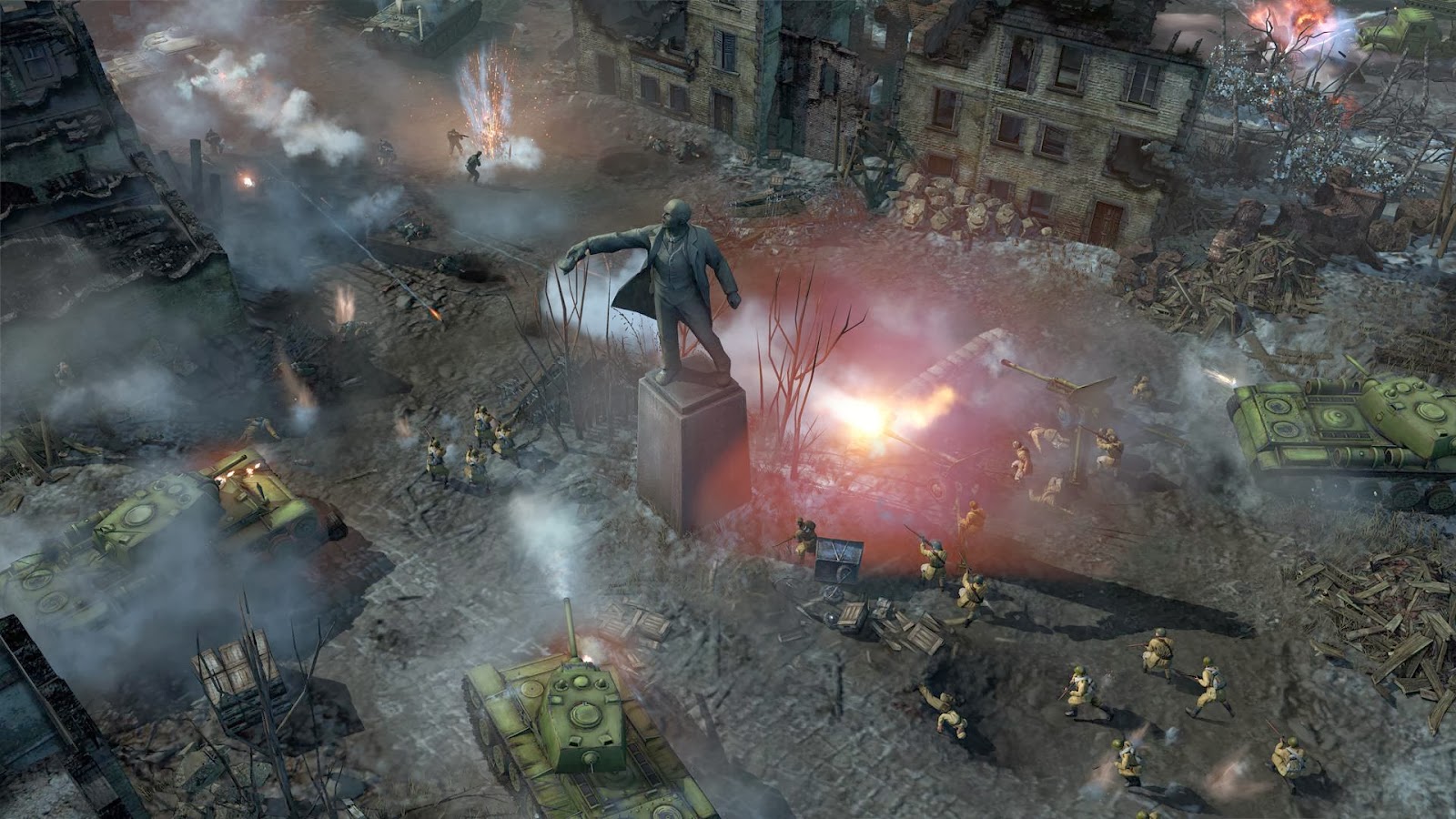 |
| Note how the pink glow from the explosion can be seen intersecting with the statue of Lenin. |
 |
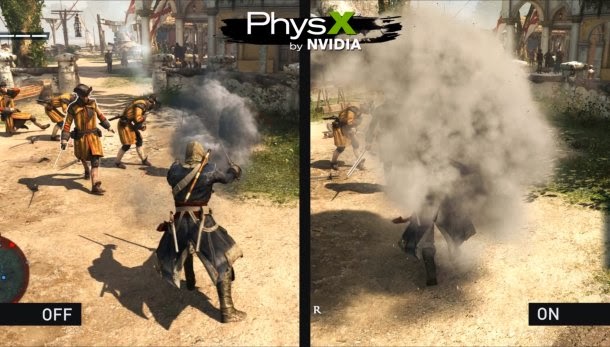 |
| Turns out you can have too much of a good thing. |
Using fewer particles that have a more specifically designed texture is the best way of achieving volume.
Texture:
Now when I say Texture, I'm not referring to the actual textures you are using in your particle (though those ARE an aspect of the particle's overall texture) I'm talking about the level of visual noise and fine detail in the effect.
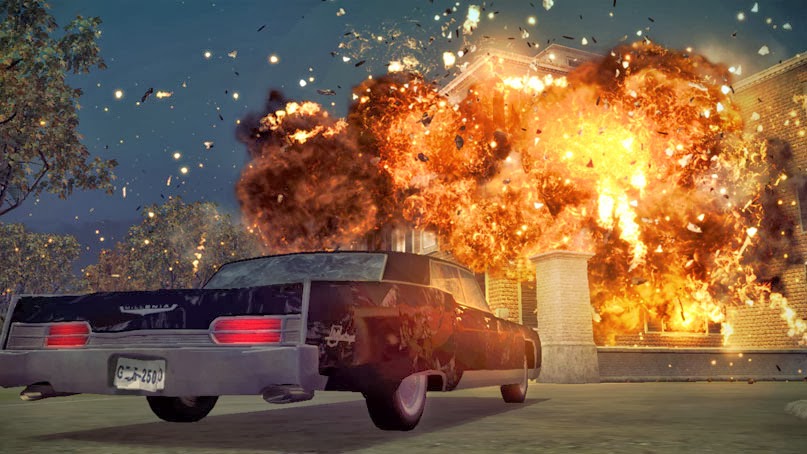 |
| An effect with a HIGH amount of texture. |
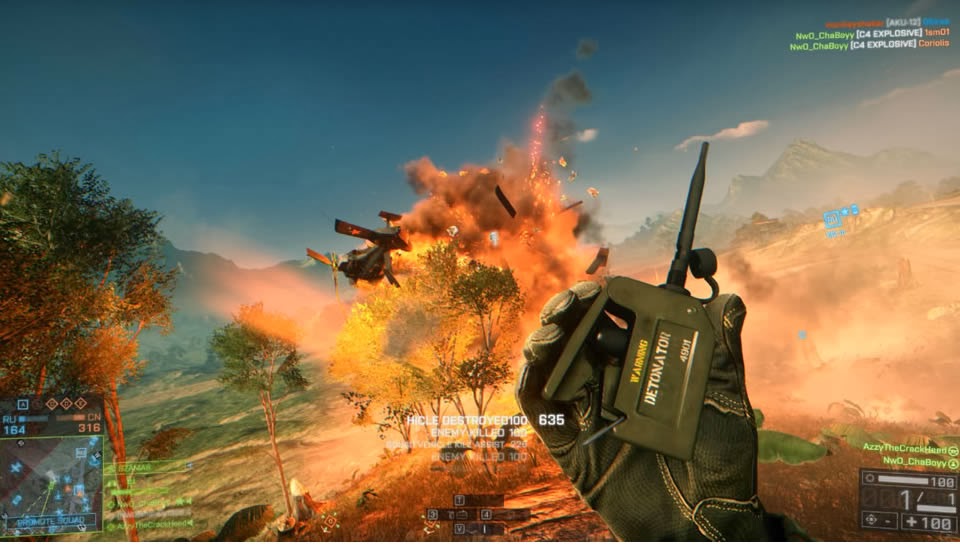 |
| An effect with a LOW amount of texture |
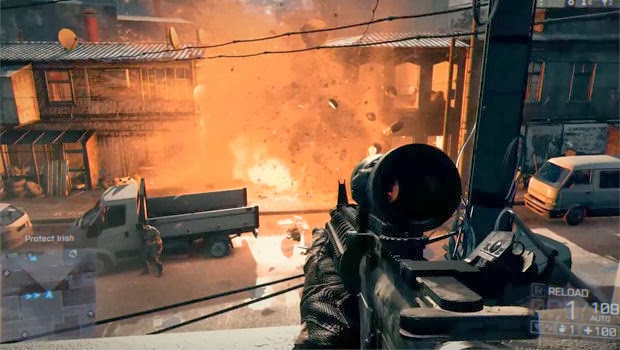 |
| I can tell there's an explosion going off, but I can't tell what it looks like. |
A game like Company of Heroes, on the other hand, has highly specialized particle textures. They have multiple different types of bursts of sparks, jets of smoke, thick debris, thin debris, etc etc etc. It's more work, but it allows them to really sculpt out the look of the effect.
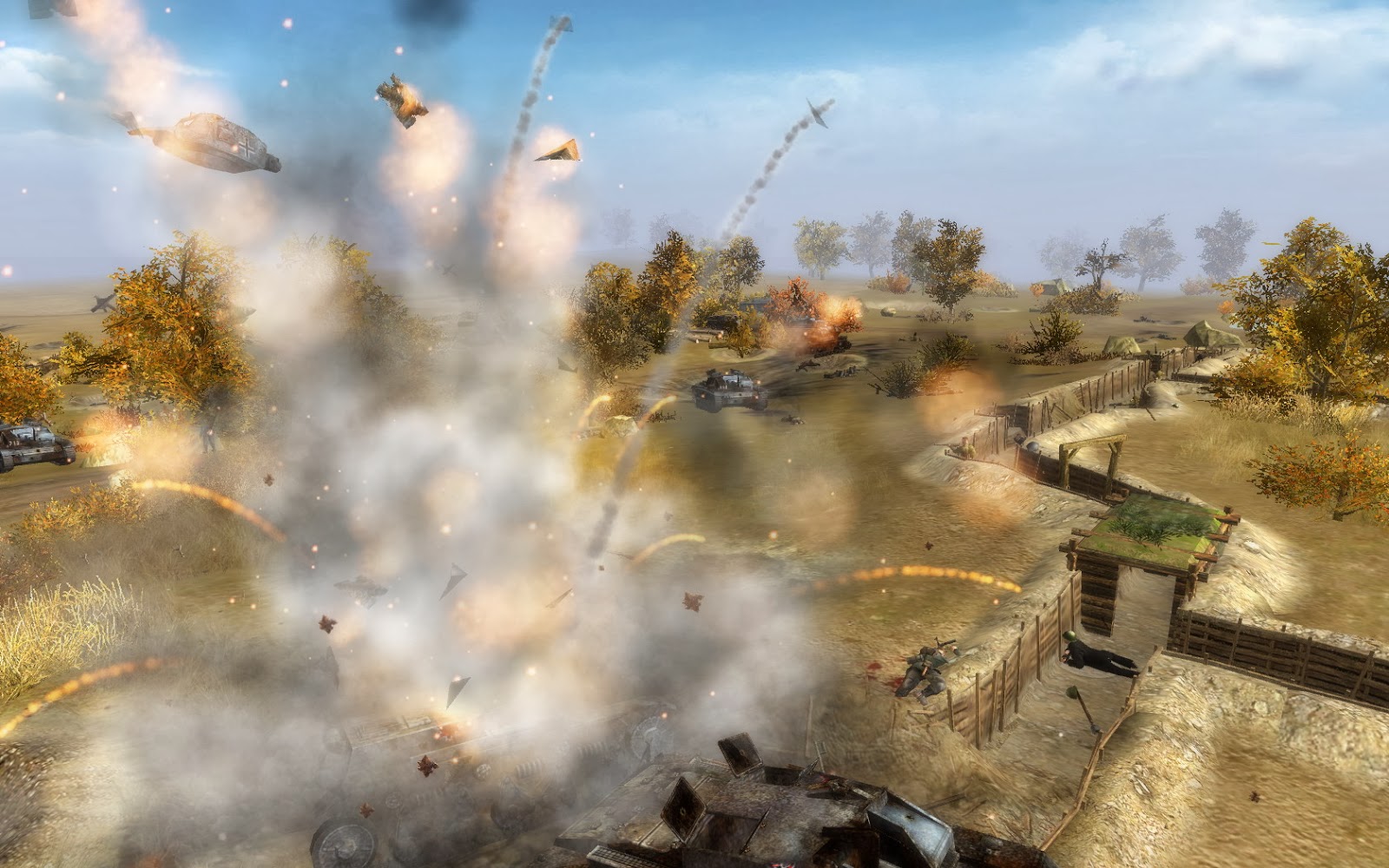 |
| Men of War. This game came out in 2009?! |
Motion:
Motion is all about how the different elements of your effect move. Motion is the biggest contributing factor to how an effect 'feels'. You can make things feel impactful, flowing, crunchy, pillowy, etc. Feel is a very vague concept, but there is no question that it exists, and trying to get control over how you want something to feel is the biggest challenge in VFX.
Offsetting elements by a fraction of a second can be the difference between a weak effect and a powerful one. Notice in the image above how the first element of the effect is a large vertical flame, then the shockwave, and only after all that does the dust cloud kick up. It doesn't happen all at once. This progression of elements in the effect makes it really feel like the explosion is ripping the ground up from the earth.
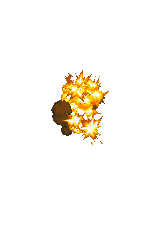 |
| Making an effect expand quickly, then retract helps add punch. |
Bad motion is instantly recognized. It will make your effect feel bland, awkward, or unfitting. Spawning everything at the same time can make it feel abrupt. Not giving the effects a unified motion will make it feel like an obvious simulation. People won't become interested with the action onscreen if your motion is boring.
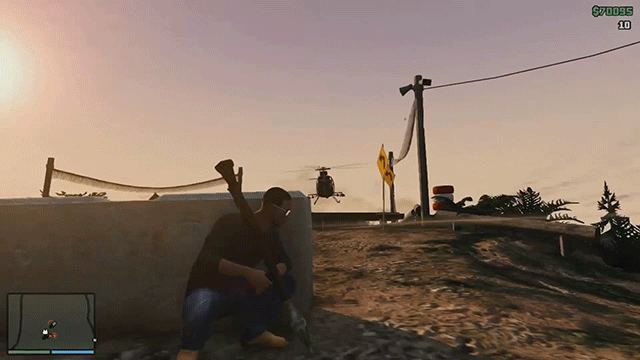 |
| It's supposed to be an explosion, but it just doesn't feel like one. |
FX Reel - 2013
This was my FX reel that I made to get an internship at Airtight Games. Mostly just source modding stuff.
VFX Best of the Best: Company of Heroes
Company of Heroes was a realtime strategy game that was released back in 2006 developed by Relic Entertainment. Company of Heroes has the most incredible looking FX design in the history of video games.
For an RTS game, CoH had an unparalleled level of detail in it's vfx. Explosions would spray an impressive amount of debris high into the sky, which would create impacts of dust as it begins to rain back down onto the ground. A tank shell ricocheting off armor would bounce into the air, trailing smoke behind it. Watching a flamethrower lick across the environment leaving objects burning in it's wake is a treat.
Watching the effects in slow mo is a great way to see just how detailed Relic's fx designers got. You can see how layered the effects really are. How they'd offset elements by fractions of a second to enhance how the effect feels.
My favorite element of Relic's fx design is the way they handle the "fans" of smoke and debris bursting from an explosion.
Many other games have attempted to use a similar method to render the dust and debris getting launched from an explosion, but nobody handles it as well as Relic does. I've attempted to replicate the effect, but it utilizes a technological aspect that I haven't seen before.
The particles burst out, orienting the texture to the direction of their initial movement, but then they are able to move freely without affecting the orientation. CoH utilizes this feature to make the streams of dust float down as if they are being effected by gravity, which is what gives the effect such a feeling of realism and weight.
What sounds like a simple action is something that's more or less impossible in most particle editors.
Where most games' fx simply feel like simulations running their course, the particle effects in CoH feel like finely crafted pieces of art. The amount of structure and detail given to each one shows how much work was put into designing them. It's something that gives me a deep respect for Relic's fx artists. Their passion for their work really shows.
 |
| Period |
For an RTS game, CoH had an unparalleled level of detail in it's vfx. Explosions would spray an impressive amount of debris high into the sky, which would create impacts of dust as it begins to rain back down onto the ground. A tank shell ricocheting off armor would bounce into the air, trailing smoke behind it. Watching a flamethrower lick across the environment leaving objects burning in it's wake is a treat.
 |
| In the normal RTS view, these guys are about half an inch on your screen. So then why do the impact fx look better than most FPS games? |
Watching the effects in slow mo is a great way to see just how detailed Relic's fx designers got. You can see how layered the effects really are. How they'd offset elements by fractions of a second to enhance how the effect feels.
My favorite element of Relic's fx design is the way they handle the "fans" of smoke and debris bursting from an explosion.
Many other games have attempted to use a similar method to render the dust and debris getting launched from an explosion, but nobody handles it as well as Relic does. I've attempted to replicate the effect, but it utilizes a technological aspect that I haven't seen before.
The particles burst out, orienting the texture to the direction of their initial movement, but then they are able to move freely without affecting the orientation. CoH utilizes this feature to make the streams of dust float down as if they are being effected by gravity, which is what gives the effect such a feeling of realism and weight.
What sounds like a simple action is something that's more or less impossible in most particle editors.
Where most games' fx simply feel like simulations running their course, the particle effects in CoH feel like finely crafted pieces of art. The amount of structure and detail given to each one shows how much work was put into designing them. It's something that gives me a deep respect for Relic's fx artists. Their passion for their work really shows.
Introduction
Hey there, I'm Valdis Matas. I'm a visual fx artist. I created this blog to showcase my work, talk about tips and tricks that I've learned over the years for developing special effects, as well as any other thoughts that I'd like to cast out into the vast sea of the internet.
As a FX artist, I'm tasked with creating fire and water, lasers and magic, gunfire and explosions. Every time you cast a magic missile, blast someone with a plasma launcher, or annihilate a city with a nuclear strike, someone like me has to craft what it is going to look like.
I'm not just an FX artist though. I enjoy character and environment painting, and I'm getting a lot of general experience as a modeler and animator at my school as well. I love coming up with stories and trying to render them out visually.
Any comments and criticism on my work is greatly appreciated! Read on and enjoy!
-Valdis
As a FX artist, I'm tasked with creating fire and water, lasers and magic, gunfire and explosions. Every time you cast a magic missile, blast someone with a plasma launcher, or annihilate a city with a nuclear strike, someone like me has to craft what it is going to look like.
I'm not just an FX artist though. I enjoy character and environment painting, and I'm getting a lot of general experience as a modeler and animator at my school as well. I love coming up with stories and trying to render them out visually.
Any comments and criticism on my work is greatly appreciated! Read on and enjoy!
-Valdis
Subscribe to:
Comments (Atom)















